On the shores of North Africa, ancient cities that have lived through the currents of human history have existed for millennia, and they may be perilously close to the crashing waves.
If the Worst Happens
From the remnants of the great ancient city of Carthage, which boasts a glorious and long past in Tunisia, to the once-bustling ports of Phoenicia and Rome. Along the coast of present-day Libya lies the majestic ruins of the Roman theater of Sabratha.

Ruins from Roman times at Tipasa in Algeria – an important trading post during Phoenicia. (Photo: CNN).
In addition to the historical monuments built by humans over the ages, the “natural treasures” of Africa are even older. For instance, the ancient coral reef of Seychelles’ Aldabra Atoll in the Indian Ocean is believed to be around 125,000 years old.
However, amid countless severe weather patterns and rising sea levels, this means that all these monuments – along with approximately 190 other spectacular sites along the coast of Africa – face the risk of being “swallowed” by the sea in the next 30 years, according to a recent study published in the journal Nature Climate Change.
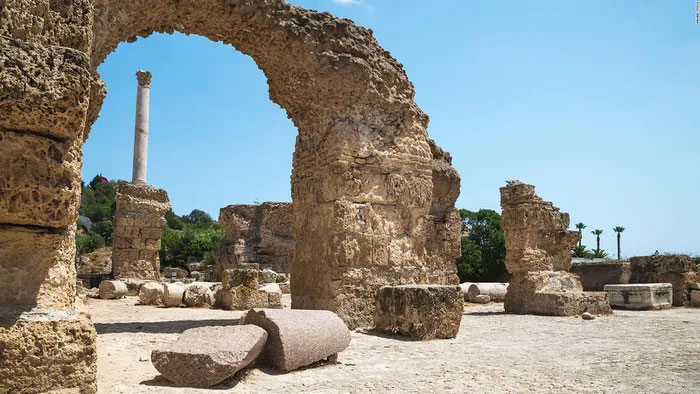
Carthage, an ancient city founded by the Phoenicians in the 9th century BC and later conquered by the Romans, is located by the sea on the outskirts of Tunis, the capital of Tunisia. (Photo: CNN).
The study indicates that sea levels have been rising at a faster rate over the past three decades compared to the 20th century, and the risks associated with climate change, such as flooding, heatwaves, and wildfires, are becoming more common.
The journal found that 56 sites are currently at risk if a “once-in-a-century” flood occurs by 2050. Even if greenhouse gas emissions continue to rise along the current trajectory, the number of affected sites could triple to 198.
“These are all places of cultural, international, economic value… and intrinsic value to these heritage sites,” said Nicholas Simpson, the study’s author and a researcher at the African Climate and Development Initiative at the University of Cape Town.
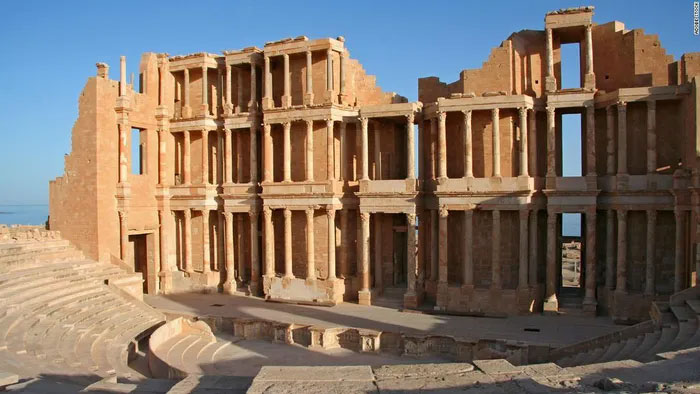
The ancient city of Sabratha in present-day Libya, which still holds the magnificent ruins of the Roman theater of Sabratha. (Photo: CNN).
Author Simpson believes that these findings have “sounded the alarm about the future of heritage sites in Africa,” prompting countries to strengthen their measures for climate change adaptation across the continent.
He emphasized: “This is an important message about the loss caused by climate change to the heritage of humanity; we hope to mobilize the will and action from many countries.”
For the First Time in Africa
This study is particularly relevant in Africa, where the connection between climate risks and historical monuments has largely been overlooked, according to Dr. Simpson.
Many scientific studies in the past have identified sites that would be threatened by climate change in the Mediterranean region, Europe, and North America, but this is the first continent-wide assessment for Africa.
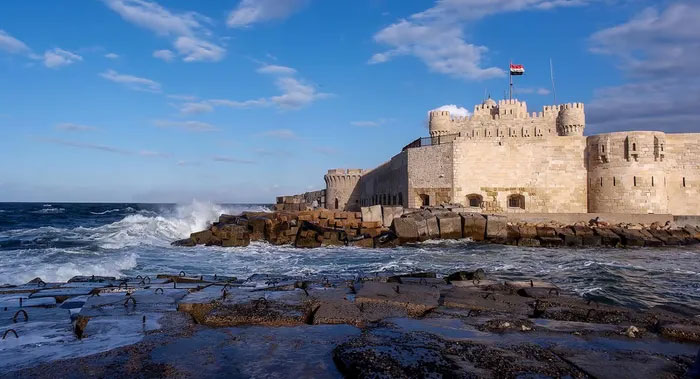
Qaitbay Citadel in Egypt, the ancient ruins of the Lighthouse of Alexandria. (Photo: CNN).
He stated: “The connection between climate change and historical monuments in Africa is being studied in detail, and compared to other continents, we know very little about them,” adding that a 2021 study showed that from 1990 to 2019, research on Africa received only 3.8% of global funding related to climate.
In this latest study, Dr. Simpson and his colleagues identified a total of 284 heritage sites recognized and reviewed by UNESCO’s World Heritage Center and the Ramsar Convention – an international agreement on the conservation and sustainable use of wetlands of international importance, across 39 countries including the African coastline.
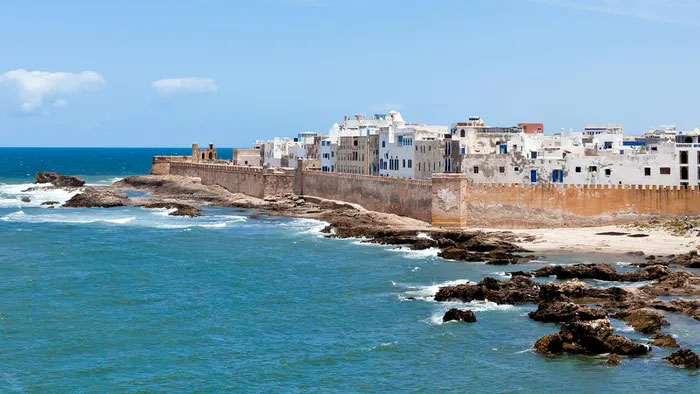
The port in the ancient town of Essaouira in Morocco. (Photo: CNN).
The researchers developed a complex model predicting sea level rise and global warming under both moderate and high emissions scenarios. The more optimistic scenario assumes that global greenhouse gas emissions will stabilize before the end of this century, while the worse scenario indicates that things will continue to rise, as they currently are, until 2100.
From there, they calculated the percentage likelihood of an extreme flooding event occurring in coastal areas, which would be a “once-in-a-century” flood.
Dr. Simpson explained that such events are a crucial indicator for understanding future climate risks, as they can cause significant damage, and of course, climate change is increasing the likelihood and frequency of extreme weather patterns.
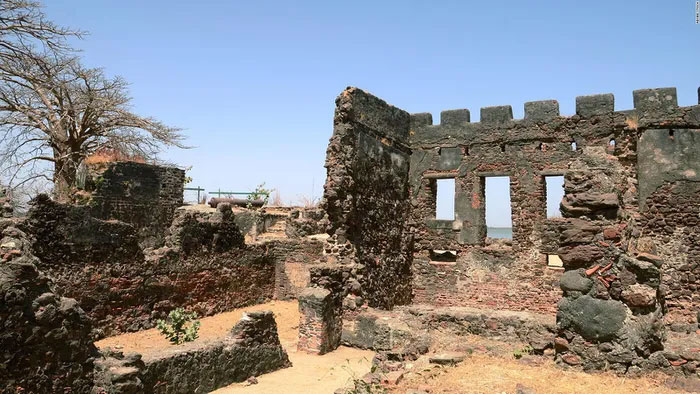
Kunta Kinteh Island in Gambia, home to the ruins of a fortress built by European slave traders. (Photo: CNN).
He stated clearly: “In the 1970s, there was a ‘once-in-a-century’ event, but as climate hazards are getting closer… everything could happen in the next 10 years.”
According to the study, North Africa is the region with the highest number of threatened sites – from the ancient ruins of North Sinai stretching between the Suez Canal and Gaza, where Egyptian Pharaohs once traveled on their way to Canaan and Tipasa, to the ancient Phoenician trading post in present-day Algeria, which was once conquered by the Romans and turned by Emperor Claudius into a strategic base in the conquest of Mauritania.
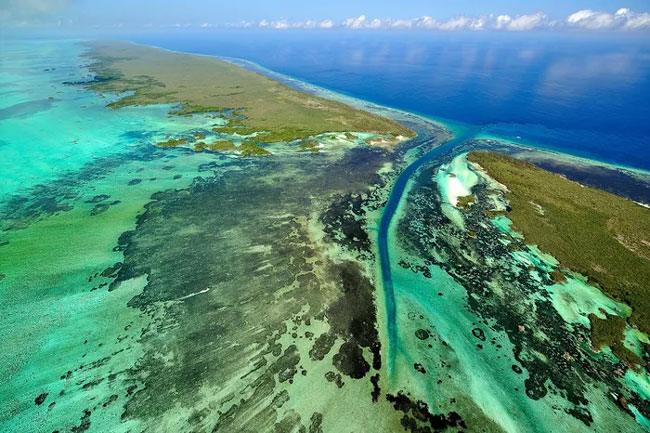
Aldabra Atoll of Seychelles in the Indian Ocean, home to large coral islands and the largest population of giant tortoises in the world. (Photo: CNN).
Protecting Cultural Heritage
The study also notes that these findings will help prioritize sites at higher risk that require immediate protective action. This may include technical solutions such as building seawalls and breakwaters, but Dr. Simpson warns that such flood mitigation measures are “extremely costly,” and there is no guarantee they will withstand future sea levels.
For him, a much better solution is to restore, plant, and manage ecological infrastructure, such as salt marshes, seagrass beds, and mangroves, which help protect nature and act as a carbon sink, absorbing carbon dioxide from the atmosphere.

Simangaliso Wetland Park on the coast of South Africa, with its vast biodiversity and ecosystems that could also be severely impacted by rising sea levels. (Photo: CNN).
Especially in Africa, it is paramount to improve local governance and the surrounding residential areas around the monuments. At the same time, it is vital to recognize that the lives of indigenous people “are part of the landscape and are closely intertwined over time.”
“Raising awareness about climate risks to historical monuments reflects the increasingly urgent needs of society,” Dr. Simpson expressed concern.

Djerba Guellala, a village on the island off the coast of Tunisia, rich in archaeological history. (Photo: CNN).

















































